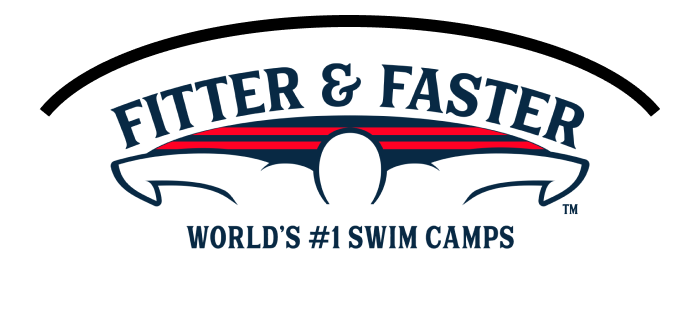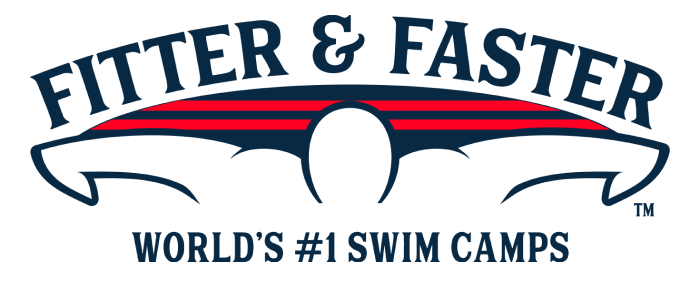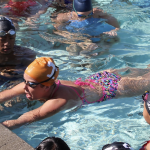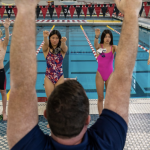Carmel, IN Swim Camp Series (Ages 9 to 12)
Carmel High School Natatorium
520 E Main St,
Carmel,
IN 46032
- days
- hours
- minutes
- seconds
Introduction
Fitter & Faster is producing a series of swim camps for competitive swimmers ages 9 to 12 at the Carmel High School Natatorium in Carmel, Indiana in 2025 & 2026! Click here for the swim camp page for ages 13 & Over.
ALL FOUR STROKES SWIM CAMP SERIES (Ages 9 to 12)
-> Complete Freestyle & Backstroke Racing Skills Swim Camp (August 23 & 24, 2025)
-> Fast Butterfly & Breaststroke Technique Swim Camp (June 6 & 7, 2026)
Click the “Curriculum Menu” below for details about each swim camp.
-> Availability in each session is limited to 24 participants to ensure the highest level learning experience.
-> SAVE when you purchase the “Entire Camp Bundle” for your swimmer.
Select a curriculum below
COMPLETE FREESTYLE & BACKSTROKE RACING SKILLS SWIM CAMP: August 23 & August 24, 2025
Freestyle and backstroke share several key characteristics. Both of the “long-axis” strokes rely on the rotation of the hips and shoulders, the use of underwater dolphin kicking, and flip turns. This camp builds on the natural connection between the two strokes to enhance technical development in both. In addition, participants will explore the racing skills that set freestyle and backstroke apart—especially the start and finish—to help your swimmer swim faster and more efficiently in both strokes. Leading this swim camp is elite clinician and Olympic Trials finalist Amy Bilquist, a Carmel High School alumna and NCAA Champion known for her high-energy teaching and expert technique instruction.
- DAY 1, SESSION 1: FREESTYLE TECHNIQUE: Even if your swimmer is already competing at the high school level, it’s never too late to build strong habits in freestyle. In this session, your swimmer will work on bodyline, rotation, breathing, kick, and pull—five key elements that contribute to an efficient, powerful freestyle.
- Bodyline: A streamlined body position is the foundation of a fast freestyle. Even small adjustments to head, neck, or back alignment can make a significant difference. As swimmers grow and mature, they often develop habits that disrupt bodyline. Your swimmer will learn how to maintain proper posture and engage the core to stay long and hydrodynamic through every stroke.
- Breathing: Efficient breathing is a challenge but critical to maintaining bodyline. Lifting the head too high causes hips to drop and drag to increase. Clinicians will work with participants to keep the head low and horizontal during the breath, using controlled rotation of the neck and body for a smooth, quick inhale.
- Rotation: Freestyle is most powerful when the swimmer rotates around their spine with each stroke. Rotation allows swimmers to use their back and core muscles during the pull, making the stroke stronger and more sustainable. Your swimmer will learn how to glide on one side and initiate rotation as the pulling hand begins its movement.
- Kicking: The kick is the motor of freestyle. Swimmers must drive from the hips and knees with good timing and control. This session will help your swimmer understand how to adjust kick tempo and power to provide speed when they want or need it.
- Pull: Clinicians will teach participants to establish a “high elbow catch,” also known as early vertical forearm, to apply pressure to the water immediately. Swimmers will then work on pushing water directly back towards their feet with sustained leverage, engaging large muscle groups for a powerful finish to each stroke.
- DAY 1, SESSION 2: BLOCK & BACKSTROKE STARTS, UNDERWATERS, AND BREAKOUTS: This session focuses on the fastest part of every race: the start, streamline, underwater dolphin kicking, and breakout. It’s during this sequence that elite swimmers cover the most ground with the greatest efficiency.
- Block Starts: A powerful start begins with proper setup on the block. Our elite clinicians will guide participants through full-body positioning to support quick reaction time and maximum speed. A clean, well-timed entry is essential for maintaining momentum from the start into the water. Your swimmer will work on refining their takeoff, body position in the air, and entry to ensure an explosive transition into streamline.
- Backstroke Starts: Like dive starts, backstroke starts rely on strong positioning before the start. Your swimmer will learn how to generate force off the wall without slipping and how to engage their leg drive and core for a fast, clean entry. Emphasis will be placed on body position in the air and a powerful leg kick to carry momentum into their streamline and breakout.
- Streamline: The streamline - when done properly - is the fastest a swimmer travels while in the water. Proper streamlines are even faster than underwater dolphin kicking. Even the most elite swimmers in the world are constantly working on improving their streamline. Your swimmer will get tips to improve their streamline and a better appreciation of what they need to do on every single wall in practice and in races.
- Initiating Underwater Dolphin Kicking: Top age group and elite swimmers maximize their streamline on every single lap. They don’t start their underwater dolphin kicking while they’re still achieving maximum speed in their streamline! They also don’t want to start the underwater dolphin kicking after their streamline has begun to slow. Your swimmer is going to learn how to time when to begin their underwater dolphin kicking.
- Powerful Underwater Dolphin Kicking: There are a few different techniques that swimmers use when underwater dolphin kicking. The common theme of these techniques is that the best swimmers kick up and down with equal power. We will show your swimmer the different techniques that elite swimmers use and teach them how to implement.
- Number of Underwater Dolphin Kicks: Figuring out the optimal number of kicks off each wall, for each race, is essential to fast swimming. Elite swimmers want to spend only the absolute necessary amount of time underwater to establish speed with each length. They want to avoid losing their breath and taking weak kicks.
- Breakouts: Many swimmers unintentionally add movements in their breakouts that reduce speed by creating drag. In this camp, participants will focus on perfecting their breakout timing to maintain momentum and power into each lap.
- DAY 2, SESSION 3: BACKSTROKE TECHNIQUE: While backstroke shares many concepts with freestyle, the actual skill can be much different. In this session, your swimmer will refine bodyline, rotation, kick, and pull specifically for backstroke.
- Bodyline: Backstroke bodyline should eliminate unnecessary movement. Even small amounts of bobbing or swaying create drag. Participants will learn to maintain a flat, aligned posture and engage the core to support a strong, stable position in the water.
- Rotation: Unlike freestyle, backstrokers rotate most fully onto their side when their hand is midway through the stroke. Rotation in backstroke is essential for two key reasons. First, to apply power during the pull, the swimmer’s hand must be positioned in front of the shoulder and at least a few inches below the surface of the water—something that’s only possible with proper body rotation. Second, rotation helps activate the large muscles of the back as the swimmer drives their hand through the surface and into the catch.
- Constant Motion: Unlike other strokes, backstroke has no built-in glide phase—the arms are always moving. Your swimmer will work on strategies to keep their stroke continuous and efficient, maximizing distance per stroke while maintaining tempo.
- Kick: Effective backstroke kicking requires generating propulsion in both directions—both the forward and backwards motions. Your swimmer will learn to kick efficiently on their back, using ankle flexibility and consistent drive to support rotation and propulsion.
- Pull: Backstroke pull requires a high elbow catch, but also uses more of the full arm in the pull than any other stroke since the hand is pulls much further outside the body line. We will work on feeling that full pull and engaging the large muscles of the back to generate power.
- DAY 2, SESSION 4: FREESTYLE & BACKSTROKE TURNS AND FINISHES: Quick, powerful flip turns and strong finishes can determine the outcome of close races. This session will teach your swimmer how to approach every wall as a chance to build speed and gain an edge.
- Momentum into the Wall: Top swimmers don’t coast into walls—they accelerate. Most age-group swimmers lose momentum approaching turns, but this session will emphasize maintaining speed all the way into the wall. For freestyle, swimmers must use cues on the bottom of the pool like the T to avoid lifting their heads. For backstroke, that means reading the flags, counting strokes, and approaching with confidence. Clinicians will share strategies to build that confidence and consistency.
- Flip Turns: Once the turn is initiated, swimmers must get into a tight, fast rotation. Your swimmer will work on initiating the flip efficiently, maintaining a compact tuck, and putting their body in a position to push off the wall with speed.
- Streamline, Underwater Dolphin Kicking, Breakout Progression: Participants will reinforce and refine the streamline-to-breakout sequence introduced in session 1, with added emphasis on applying it during turn exits.
- Finishes: Races are often decided in the final few strokes. Your swimmer will learn how to judge the distance to the wall and adjust tempo, so they arrive with a fully extended, high-speed finish. The session will cover strategies for both freestyle and backstroke finishes, starting from about 10 yards out.
FAST BUTTERFLY & BREASTSTROKE TECHNIQUE SWIM CAMP: June 6 & June 7, 2026
Butterfly and breaststroke are known as the "short-axis" strokes because the power comes from undulation around the hips. The potential for large drag forces means these strokes require a high degree of technical precision and body control to maintain efficiency. This camp builds on the natural connection between the two strokes to enhance technical development in both. Over two days, your swimmer, no matter their level, will improve their butterfly and breaststroke technique, racing and training skills!
- DAY 1 (Saturday, June 6): BUTTERFLY TECHNIQUE: Butterfly is powerful, rhythmic, and beautiful when done well—but challenging to master. We’ll break it down into fundamental skills and help swimmers understand how to swim fly efficiently across all distances. An efficient butterfly is a fast butterfly!
- Bodyline: Fatigue often breaks down butterfly technique late in races. We’ll work on maintaining a strong bodyline and high hips using a solid downkick on hand entry, an effective chest press, and a long reach out front. A strong core connection will help swimmers stay streamlined and efficient from start to finish.
- Kick: Each butterfly stroke has two kicks to propel the swimmer towards the other end of the pool! If the kicks are properly timed and strong, they can aid your swimmer’s efficiency and stroke timing! Your swimmer will work on how and when to kick in butterfly for maximum speed.
- The Catch: A proper catch starts with a well positioned hand entry. Hands should enter flat (not thumbs down), setting up a high-elbow catch that drives forward momentum. At the highest speeds, the momentum of the entry can be used to generate power on the water. For greater efficiency swimmers should reach forward and extend in the glide phase of the stroke.
- Pull Pattern: Once swimmers establish a vertical forearm, the pull should move straight back toward the feet. Wrist angles must shift to keep the palms facing backward. We’ll emphasize exiting the stroke with momentum—without flipping water up, which wastes energy and drives the body down.
- Breathing: Breath timing in butterfly affects everything—bodyline, pull, kick, and speed. Swimmers will learn to start their breath during the catch phase of stroke when their power is highest in order to support lifting their head and shoulders without their hips falling. They will also learn to keep their head low to the water in order to maintain the most efficient body position.
- DAY 2 (Sunday, June 7): BREASTSTROKE TECHNIQUE: Breaststroke is unique—no two swimmers look the same at the elite level. It’s all about reducing resistance, perfecting timing, and finding what works for each individual. We’ll build a foundation and then help each swimmer refine their style for maximum speed and efficiency. No matter your swimmer’s level, this session will strengthen their technique and lead to faster and more efficient breaststroke races… and faster IM’s!
- Bodyline: With the most drag of any stroke, breaststroke demands constant attention to body position. We’ll work on keeping the head, hips, and spine aligned and moving forward at every point in the stroke—especially during the crucial first strokes off each wall.
- Kick: A strong, powerful kick is key in breaststroke. In every breaststroke kick, the ankles should stay outside the knee. The optimal size of the kick varies by each swimmer and is highly dependent on knee and ankle flexibility. Swimmers who view themselves as “bad” at breaststroke kick often only need to focus on decreasing the size of their kick and they can unlock unknown potential.
- Pull: To have a great breaststroke pull, swimmers need to keep their elbows near the surface of the water and out in front of their shoulders at all times. Once the hands turn in and begin the “recovery” phase they need to move quickly to full extension in front of the body to reestablish bodyline. The pull pattern varies based on a swimmer’s kick. We’ll help swimmers match their pull width and tempo to their natural kick style—maximizing propulsion and efficiency.
- Timing: Elite breaststrokers are constantly tweaking their timing to achieve the ideal combination of power and efficiency. Our clinicians will introduce key drills that help connect the pull, kick, breath, and glide into a smooth, powerful cycle.
SESSION START TIMES (AUGUST):
- Session 1 & 3: Check-in 8:45 AM, Camp 9-11:30 AM
- Session 2 & 4: Check-in 12:15 PM, Camp 12:30-3 PM
- Check-in 8:45 AM, Camp 9-11:30 AM
- If you are looking for the swim camp page for ages 13 & over, click here.
ASK QUESTIONS
Swimmers and parents are invited to ask the clinicians questions during a Q&A session. Gain insight into their training regimen, diet and nutrition, and recovery tactics.
WATCH THE CLINICIANS
Observe clinicians swim at full speed and demonstrate a progression of perfectly executed drills to achieve powerful, efficient and fast swimming.
PUT YOUR SKILLS TO THE TEST
Throughout the camp, swimmers will practice what they've learned with some of the world's most elite Swimmer Clinicians and coaches!
Take a photo, get autographs, and chat with your clinicians!
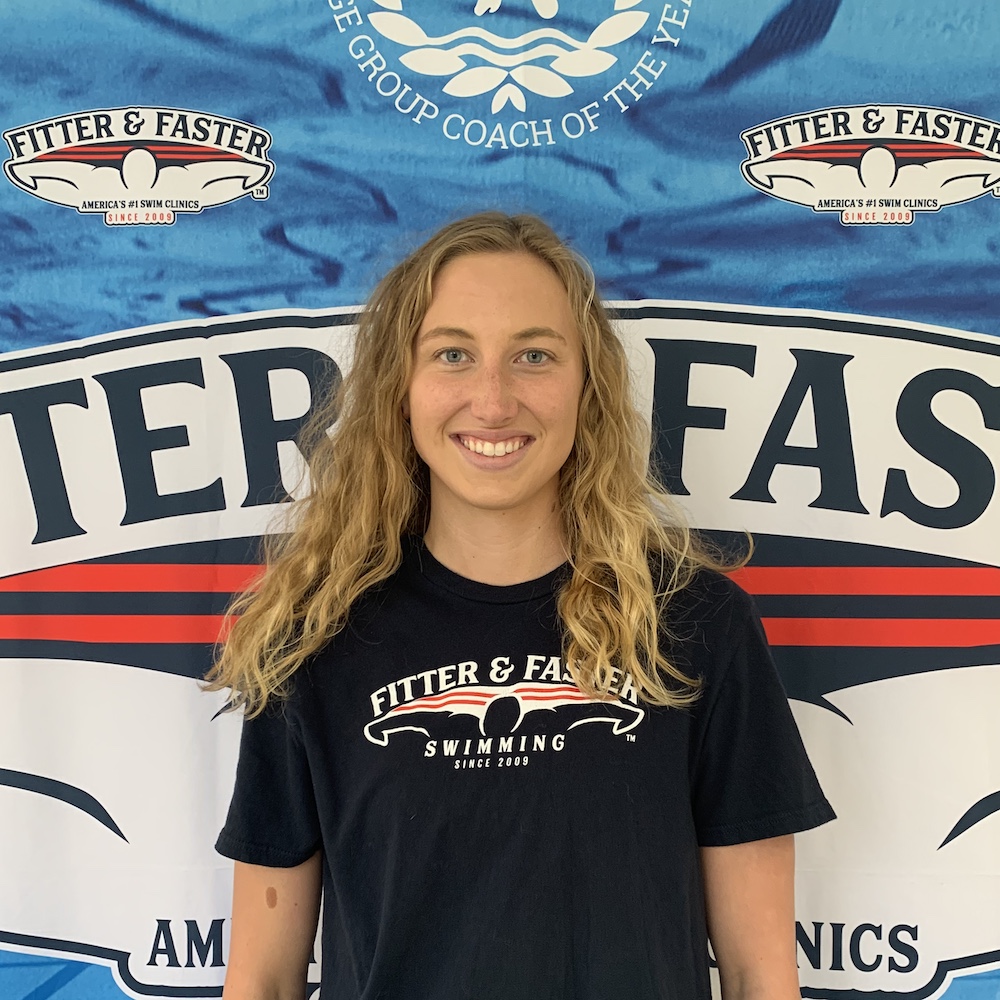
Amy Bilquist
National Champion Amy Bilquist believes that no matter how fast you are, there is always more to learn. Amy has swam for some of the most incredible coaches on the planet and now she wants to share what she's learned with your swimmer. The key to success is small and consistent improvement. Sign up to learn from Amy and find new ways to drop time!
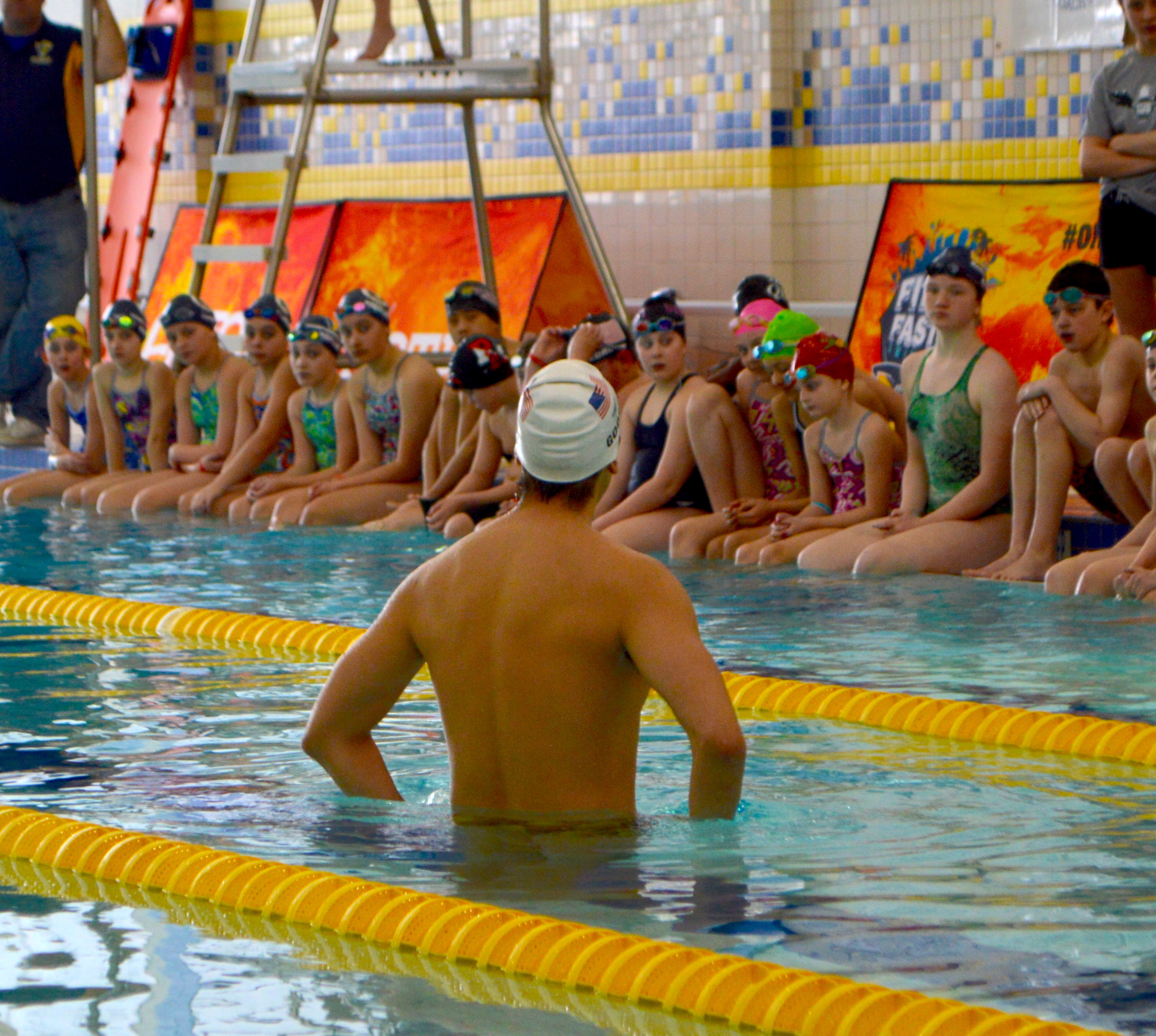
Elite Clinician
Fitter and Faster clinicians are Olympians and National Team members who have achieved at the highest level of the sport of swimming... and who have the unique skill to teach what they know from a technical perspective to swimmers of all ages and abilities.
Inquisitive, Educated Swimmers are Faster Swimmers! Sign up today!


